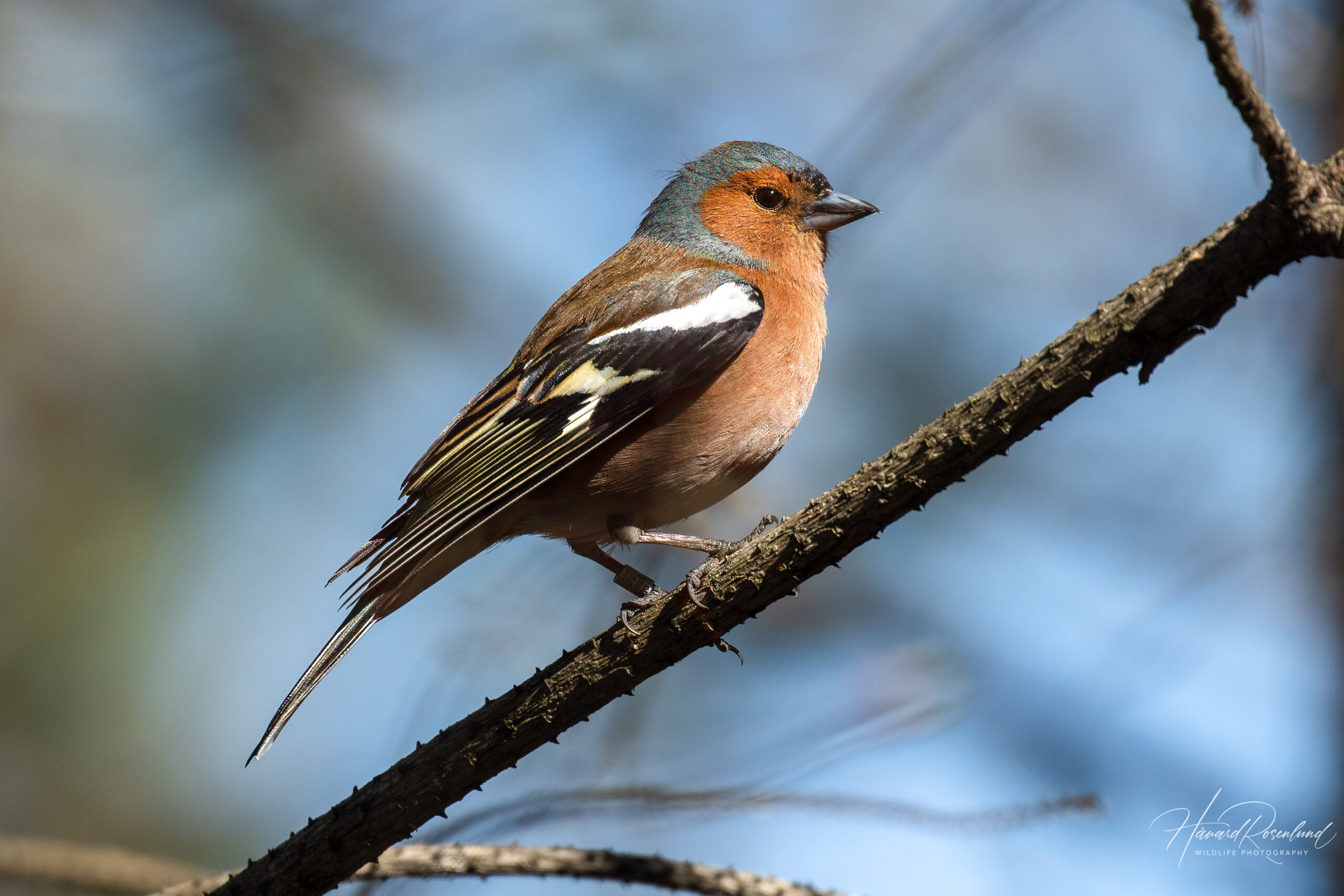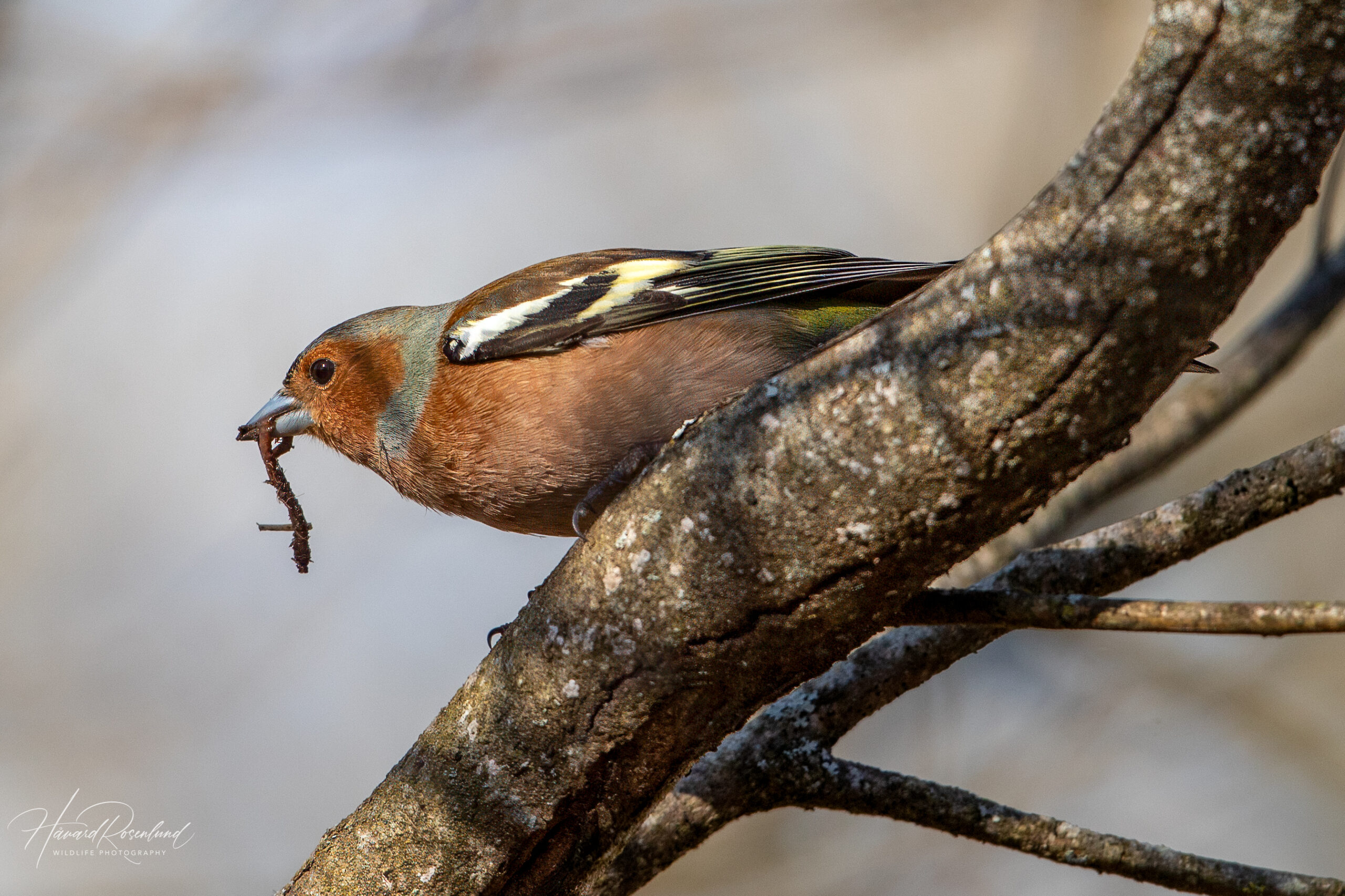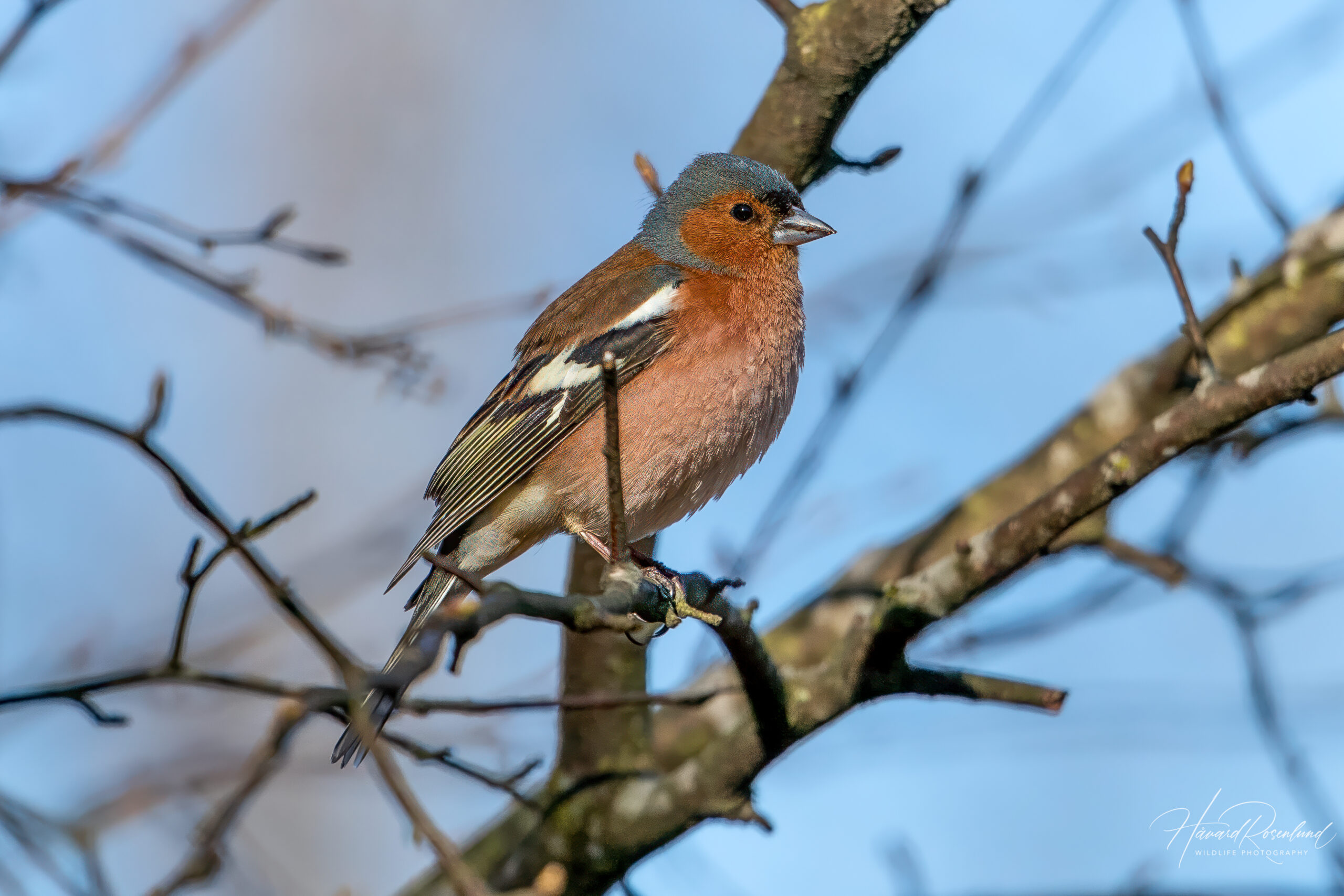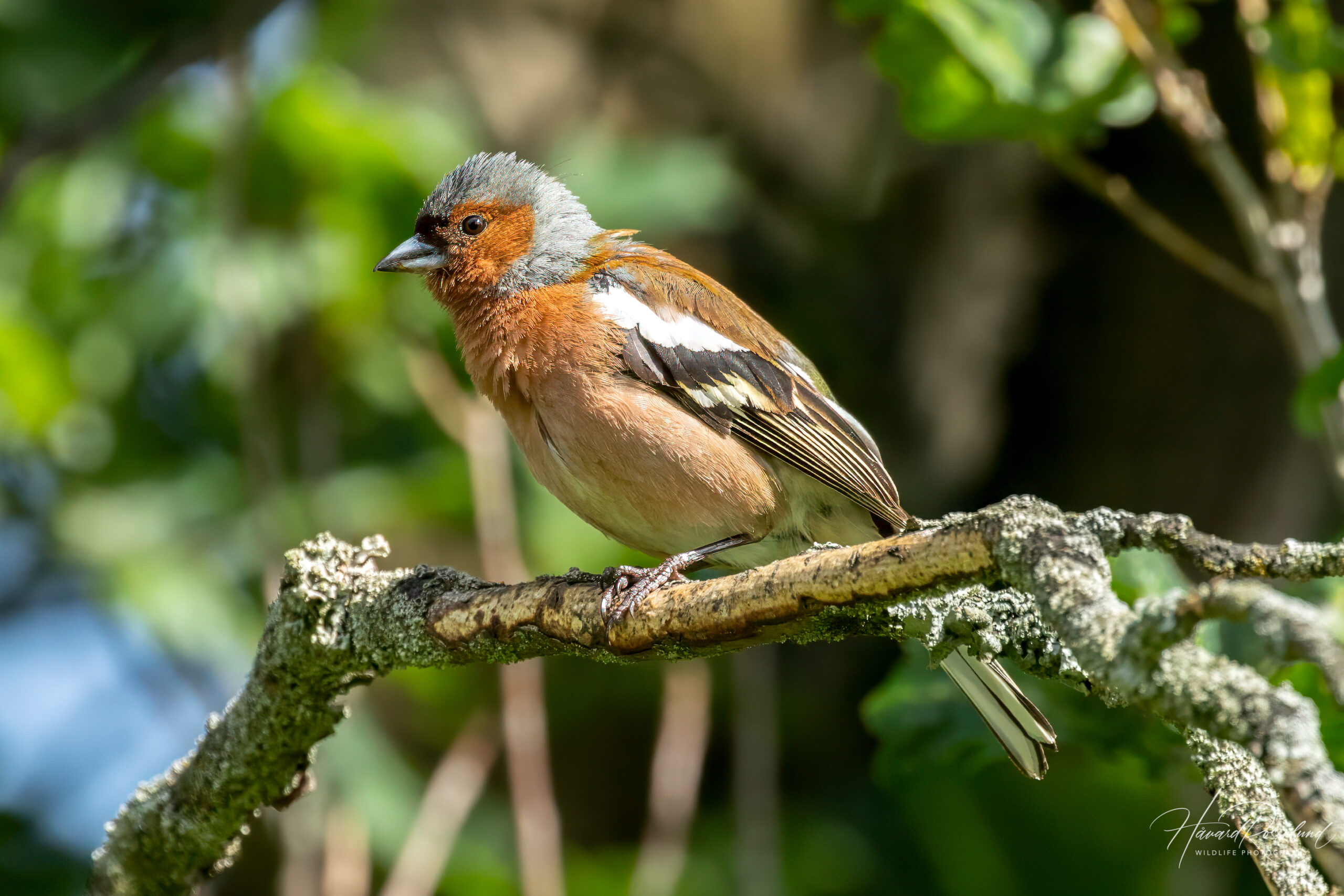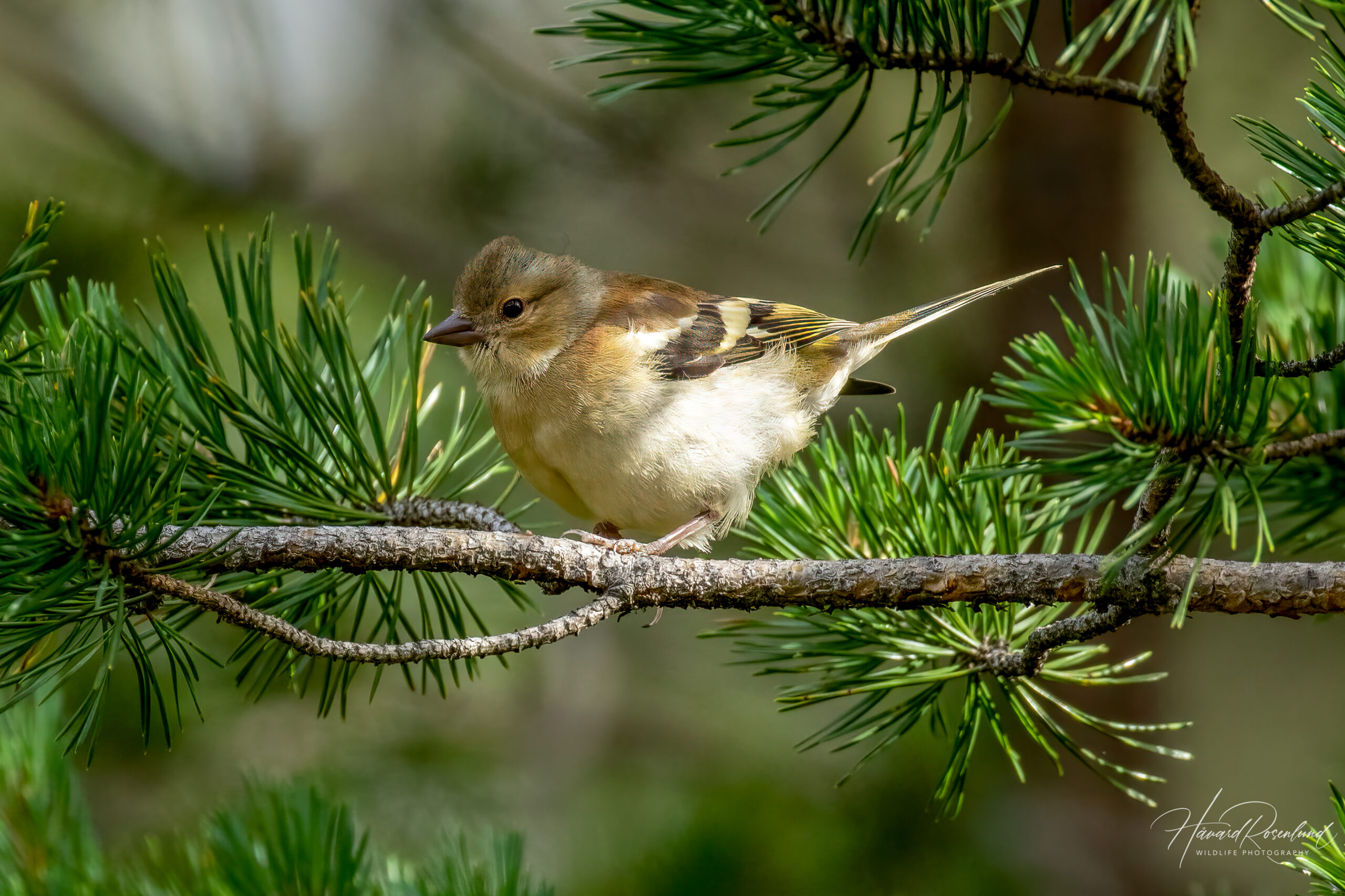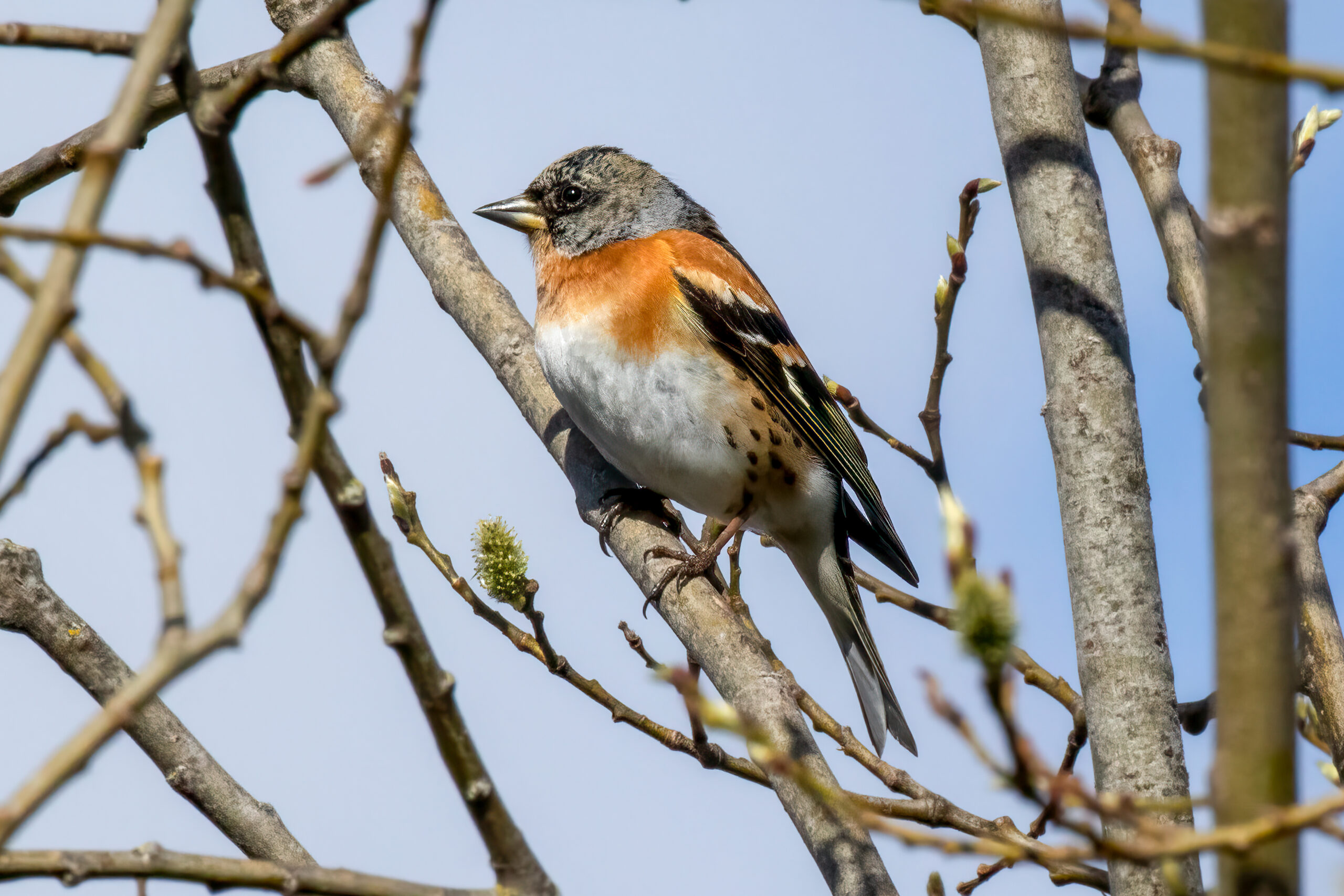Description
The common chaffinch (Fringilla coelebs) is a widely distributed finch found across Europe, Asia, and into North Africa. It is a well known bird species to many within its range due to its vibrant plumage and commonly heard melodious song. Males are particularly colorful with a blue-grey cap, rust-red underparts, and a greenish rump, while females and juveniles are more subdued in color, featuring a more uniform brown appearance. The common chaffinch has a size range of 14 to 18 cm (5.5-7.0 in) in length, making it a medium-sized finch. Distinguishing the common chaffinch from similar species can be done by noting its unique double white wing bars and the tail pattern, where the outer tail feathers are white with a contrasting black tail.
Diet & habitat
The common chaffinch is an adaptable bird that thrives in a wide range of habitats, including deciduous and mixed forests, gardens, orchards, and hedgerows. Its diet primarily consists of seeds, but it also consumes insects and invertebrates, especially during the breeding season, to provide protein to its young. Chaffinches are known for their ability to forage both on the ground and in trees, showing a preference for seeds from plants and trees, such as beech and ash. During the winter, they can often be seen in flocks, feeding on spilled seeds in farmlands and gardens. They are known to adapt their feeding habits and diet according to the season and available resources.
Migration
Birds from the northern parts of their distribution are migratory, traveling to southern Europe and North Africa to overwinter. In contrast, chaffinches in the milder southern and western parts of their range tend to be sedentary or only make short-distance movements. This migration behavior ensures that they can find sufficient food sources throughout the year, especially during the colder months when seeds are less abundant.





